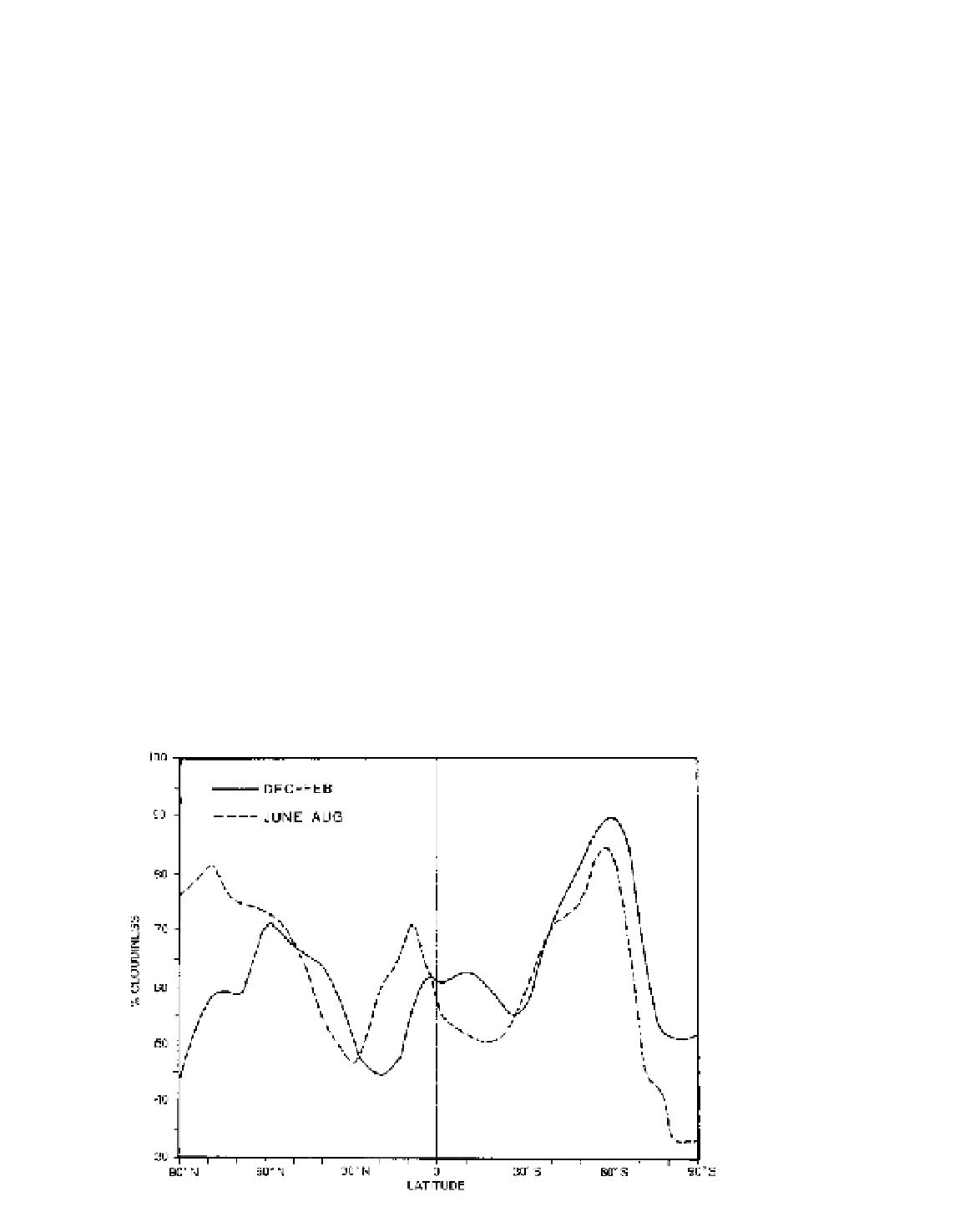Geoscience Reference
In-Depth Information
3 Global cloud cover
effect on incoming solar radiation outweighs the infra-
red absorption (Figure 5.12). However, cloud forcing is
complex; for example, more total cloud implies more
absorption of outgoing terrestrial radiation (positive
forcing, leading to warming) whereas more high cloud
produces increased reflection of incoming solar radia-
tion (negative forcing, leading to cooling).
There is evidence that cloud amounts increased
during the twentieth century. Observations, for exam-
ple, show a striking increase in cloud cover over the
United States (especially between 1940 and 1950). This
may be associated with higher atmospheric sulphate
concentrations due to increased coal burning. The rela-
tionship with temperature is unclear.
There are difficulties in determining cloud cover and
layer structure from both satellite and ground obser-
vations. Surface-based estimates of cloud amounts
are some 10 per cent greater than those derived from
satellites, mainly because of the problem of estimating
gaps near the horizon. The greatest discrepancies
occur in summer in the subtropics and in polar regions.
Total cloud amounts show characteristic geographical,
latitudinal and seasonal distributions (see Figures 3.8
and 5.11). During the northern summer there are high
percentages over West Africa, northwestern South
America and Southeast Asia, with minima over the
southern hemisphere continents, southern Europe, North
Africa and the Near East. During austral summer there
are high percentages over tropical land areas in the
southern hemisphere, due partly to convection along the
Intertropical Convergence Zone, and in subpolar ocean
areas due to moist air advection. Minimal cloud cover is
associated with the subtropical high-pressure regions
throughout the year, whereas persistent maximum cloud
cover occurs over the Southern Ocean storm belt at
50-70°S and over much of the ocean area north of 45°N.
Cloud acts both as an important sink for radiative
energy in the earth-atmosphere system, through absorp-
tion, as well as a source due to reflection and re-radiation
(see Chapter 3B, C). The mean annual net forcing effect
of clouds is negative (~ -20 W m
-2
) because the albedo
E FORMATION OF PRECIPITATION
The puzzle of raindrop formation has already been
noted. The simple growth of cloud droplets by conden-
sation is apparently an inadequate mechanism and more
complex processes have to be envisaged.
Various early theories of raindrop growth can be
discounted. Proposals were that differently charged
droplets could coalesce by electrical attraction, but it
appears that distances between drops are too great and
the difference between the electrical charges too small
for this to happen. It was suggested that large drops
Figure 5.11
Average zonal distribu-
tion of total cloud amount (per cent),
derived from surface observations over
the total global surface (i.e. land plus
water) for the months of December
to February and June to August during
the period 1971 to 1981.
Source
: From London
et al
. (1989).

